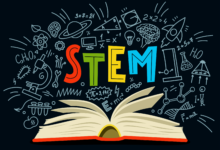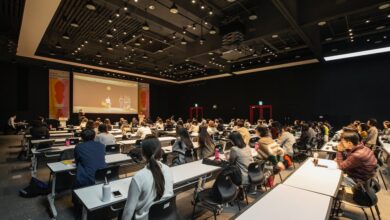7 Best Roles of EdTech in Promoting Intercultural Understanding

Intercultural Understanding, In today’s interconnected world, fostering intercultural understanding has become increasingly crucial. As societies become more diverse and globalized, the need to bridge cultural gaps and foster empathy among individuals from different backgrounds becomes imperative. Education technology, commonly known as EdTech, plays a pivotal role in promoting intercultural understanding. In this article, we will explore seven of the best roles that EdTech plays in achieving this goal.
Read More: 5 Important benefits of EdTech for students with learning disabilities
Role 1: Virtual Cultural Exchange Programs
These programs offer numerous benefits. They broaden students’ perspectives, challenge stereotypes, and foster mutual respect and empathy. By experiencing firsthand the richness of different cultures, students develop a deeper understanding and appreciation for diversity, breaking down barriers and building lasting connections.
Several successful initiatives have demonstrated the transformative potential of virtual cultural exchange programs. For example, the “Global Nomads Group” connects students from diverse backgrounds through interactive video conferences and shared projects. Such initiatives empower young minds to embrace diversity and actively contribute to a more inclusive society.

Role 2: Language Learning Platforms
Language is a powerful tool for fostering intercultural understanding. Learning a foreign language not only enables individuals to communicate effectively but also provides insights into the culture, traditions, and values of the speakers. EdTech platforms have revolutionized language learning by offering interactive and immersive experiences.
Through advanced language learning apps, students can engage in real-time conversations with native speakers, access multimedia resources, and practice language skills at their own pace. These platforms incorporate cultural elements, exposing learners to authentic contexts and facilitating a deeper understanding of different cultures.
By breaking down language barriers, EdTech language learning platforms enable individuals to connect with people from diverse backgrounds. This interaction promotes intercultural understanding, empathy, and appreciation for cultural diversity.
Role 3: Global Collaborative Projects
Intercultural Understanding, Global collaborative projects bring students from different countries together to work on shared initiatives. EdTech platforms provide the necessary infrastructure for such collaborations, fostering intercultural understanding through joint problem-solving, cultural exchange, and collective learning.
These projects offer students the opportunity to explore global challenges, share perspectives, and collaborate on solutions. By working with peers from diverse backgrounds, students gain insights into different cultural perspectives and develop essential skills like empathy, communication, and teamwork.
Successful global collaborative projects, such as the “Flat Connections” project, have demonstrated the power of EdTech in promoting intercultural understanding. These projects create authentic learning experiences where students engage with real-world issues, form meaningful connections, and develop a global mindset.
Role 4: Diversity and Inclusion Training
Promoting diversity and inclusion is vital for fostering intercultural understanding. EdTech tools and resources play a significant role in providing accessible and engaging training on these topics. From online courses to interactive modules, EdTech platforms offer a range of resources to educate individuals about the importance of diversity and inclusion.
These tools facilitate self-reflection, challenge biases, and promote empathy. Through interactive exercises, case studies, and simulations, learners can develop a deeper understanding of the experiences and challenges faced by individuals from different backgrounds.
Many organizations and institutions now use EdTech solutions for diversity and inclusion training. These resources help create inclusive environments, where individuals are equipped with the knowledge and skills to interact respectfully and collaboratively with people from diverse cultures.
Role 5: Access to Diverse Content
EdTech platforms provide access to a vast array of diverse content, including books, articles, videos, and multimedia resources. This diverse content exposes learners to different perspectives, histories, and cultures, fostering intercultural understanding.
By incorporating diverse content into their lessons, educators can encourage students to explore and critically analyze different cultural narratives. This exposure broadens their horizons, challenges preconceived notions, and cultivates a more nuanced understanding of the world.
EdTech platforms leverage personalized learning algorithms to recommend relevant and diverse content to students, ensuring that they have access to a variety of resources that align with their interests and educational goals. This approach empowers students to engage actively with diverse ideas and viewpoints, promoting intercultural understanding.

Role 6: Cultural Sensitivity Training
Cultural sensitivity is crucial for effective intercultural communication and understanding. EdTech tools offer innovative ways to enhance cultural sensitivity by providing interactive simulations, case studies, and immersive experiences.
Through these tools, learners can engage in virtual scenarios that require them to navigate cultural nuances, adapt their communication styles, and demonstrate respect for cultural differences. These experiences enable learners to develop the skills necessary for effective cross-cultural interactions.
By incorporating cultural sensitivity training into educational programs, EdTech platforms empower individuals to communicate more effectively and respectfully across cultural boundaries. This promotes intercultural understanding and helps to build inclusive communities.
Role 7: Global Virtual Classrooms
Global virtual classrooms connect students from different parts of the world, breaking down geographical barriers and promoting intercultural understanding. EdTech platforms enable educators to create collaborative online environments where students can learn from and with peers from diverse cultures.
These virtual classrooms provide opportunities for cross-cultural dialogue, knowledge sharing, and collaborative learning experiences. Students gain exposure to different perspectives, develop cultural competencies, and build meaningful connections with peers from around the globe.
Successful initiatives like “ePals” and “iEARN” demonstrate the transformative power of global virtual classrooms. These platforms facilitate cross-cultural exchanges, promote intercultural understanding, and prepare students to become global citizens in a rapidly changing world.
Intercultural Understanding, Conclusion
EdTech plays a vital role in promoting intercultural understanding by offering innovative tools, resources, and platforms. From virtual cultural exchange programs and language learning platforms to global collaborative projects and diversity training, EdTech fosters empathy, cultural sensitivity, and appreciation for diversity.
Through EdTech, individuals can connect, learn, and collaborate with people from diverse backgrounds, breaking down barriers and building a more inclusive society. By leveraging the power of technology, education can become a catalyst for intercultural understanding, paving the way for a brighter and more harmonious future.
Read More: 7 Best impacts of EdTech on student motivation
FAQs
What is EdTech?
EdTech, short for Education Technology, refers to the use of technology and digital tools to enhance and support teaching and learning processes.
How does virtual cultural exchange promote intercultural understanding?
Virtual cultural exchange allows students from different cultures to connect and learn about each other’s traditions, values, and perspectives, fostering empathy and intercultural understanding.
Can language learning platforms really enhance intercultural understanding?
Yes, language learning platforms provide insights into different cultures and enable individuals to communicate effectively with people from diverse backgrounds, promoting intercultural understanding.
Are there any free resources for diversity and inclusion training?
Yes, many EdTech platforms offer free resources, courses, and modules for diversity and inclusion training. These resources promote awareness and understanding of diverse cultures.
How do global virtual classrooms foster intercultural understanding?
Global virtual classrooms connect students from different cultures, providing opportunities for cross-cultural dialogue, collaboration, and knowledge sharing, fostering intercultural understanding.












One Comment